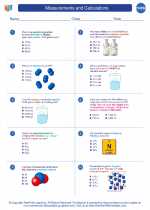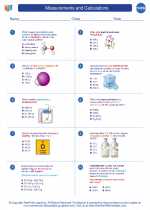Charles's Law
Charles's Law is a fundamental principle in chemistry that describes how gases tend to expand when heated. This relationship between the volume and temperature of a gas was first observed by French scientist Jacques Charles in the late 18th century. The law can be expressed mathematically as V1/T1 = V2/T2, where V1 and T1 are the initial volume and temperature, and V2 and T2 are the final volume and temperature, respectively.
Explanation of Charles's Law
Charles's Law is based on the concept that as the temperature of a gas increases, the particles within the gas gain kinetic energy and move with greater speed. This increased movement causes the particles to collide more frequently with the walls of the container, exerting a greater force and therefore leading to an increase in volume. Conversely, when the temperature decreases, the particles move more slowly, resulting in fewer collisions and a decrease in volume.
Mathematical Representation
The relationship between the volume and temperature of a gas at constant pressure can be expressed as:
center;">V1 / T1 = V2 / T2
Where:
V1 = initial volume
T1 = initial temperature (in Kelvin)
V2 = final volume
T2 = final temperature (in Kelvin)
Application of Charles's Law
Charles's Law is particularly relevant in various real-world applications, such as in the behavior of gas-filled balloons, the functioning of airbags in automobiles, and the operation of hot air balloons. Understanding this principle is crucial for predicting the behavior of gases under different temperature conditions and for designing systems that rely on the expansion and contraction of gases.
Study Guide for Charles's Law
- Understand the concept of temperature in Kelvin and how it relates to the kinetic energy of gas particles.
- Learn to apply the mathematical formula V1 / T1 = V2 / T2 to solve problems related to the volume and temperature of gases.
- Explore real-world examples of Charles's Law in action, such as in climate-controlled environments, gas-powered appliances, and industrial processes.
- Practice using Charles's Law to make predictions about the behavior of gases in different scenarios and understand how changes in temperature affect gas volume.
- Review the historical context of Charles's Law and its significance in the development of the modern understanding of gas behavior.
By mastering Charles's Law, you will gain a deeper understanding of the behavior of gases and be able to apply this knowledge to various scientific and engineering contexts.
.◂Chemistry Worksheets and Study Guides High School. Measurements and Calculations

 Worksheet/Answer key
Worksheet/Answer key
 Worksheet/Answer key
Worksheet/Answer key
